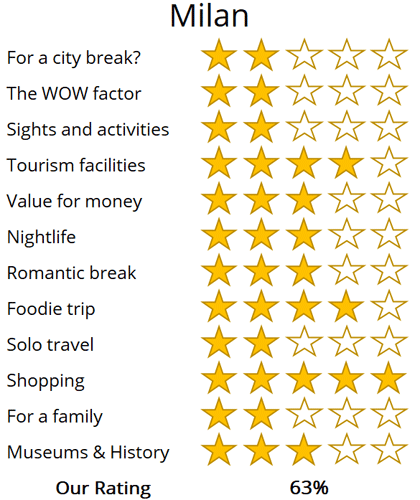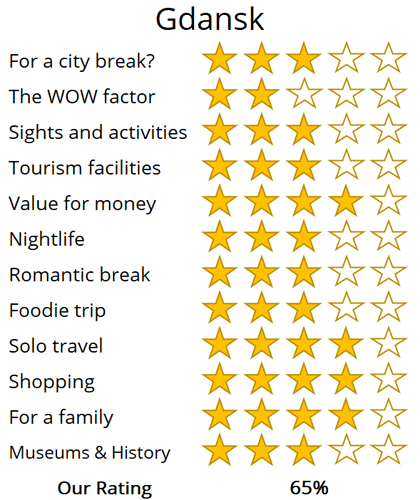WhereToGoForMyHoliday.com
The best destination comparison site!
WhereToGoForMyHoliday.com
The best destination comparison site!
Gdansk or Milan, which is better for your holiday in 2024?
Gdansk and Milan both offer unique and enticing experiences, but which one should you choose for your city break or holiday?
We recognise the difficulty in making this decision. While there is abundant information available on both destinations, clear guidance on which city better aligns with your travel preferences is often hard to find.
This article aims to provide an impartial comparison of Milan and Gdansk, and hopefully help you to choose the best city to visit.
The article is structured into several sections, each of which can be directly accessed through the following links:
• Introduction to the cities
• Scores and ratings
• Which one should I, friends, or family visit?
• When to visit and weather
• Who is the city suited for?
• The perfect 48hours (with map)
• Tourism details (where to stay? airport details?)
Introduction to Milan and Gdansk
Salt-washed, industrial-chic and filled with hipsters, Gdansk is one of the most happening cities in Poland. It sits on the edge of the Baltic Sea, proudly showcasing its merchant guilds and mansions, a leftover from the years when this was one of the richest ports in the Hanseatic League.
Like most Polish cities, the focal point is an immersive Old Town (also called the Main City) that beats with life and cafés and boutique shops.
Around that's a newer city where the remnants of Communist rule still pop up in the tenement blocks and the famous dockyards where the Solidarity movement heralded the beginning of the end for the USSR in the 1980s.
On top of all the architecture and culture is a vibey bar scene that's powered by a hefty student population. There are clubs and pubs everywhere, from the open-air boats on the quaysides to the hidden basement bars in the old quarter.
What's more, Gdansk is the gateway to the Polish coast, with Hel Peninsular and its oat-topped dunes close by, or the resort town of Sopot only a short train ride away.
Milan, synonymous with fashion and luxury shopping, is a city where appearances matter, and even its main tourist attraction, the Galleria, is a shopping arcade. While the historic centre is home to high-end boutiques and designer stores, the city’s more creative and edgy districts can be found on the outskirts.
Visitors should be aware that Milan that Milan does not have the breadth of monuments and standout tourist attractions as of other Italian cities. This is primarily a business focused city, which reveres in sophistication and looking good.

The gothic Duomo in central Milan – a highlight is the view from the roof
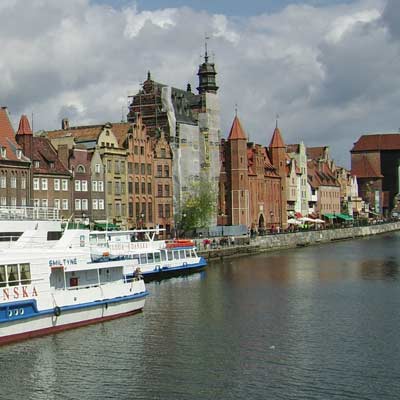
The scenic Długa waterfront in Gdansk
High-level summary for Gdansk and Milan
Summary
Where would I journey for a personal escape?
Gdansk
Where would I send my parents for a memorable visit?
Gdansk
Where's the ideal destination for my adventurous 19-year-old cousin?
Gdansk
Where should my food-obsessed friend indulge their culinary passions?
Milan
Note: The above comparisons are weather-independent and are based on travel during the most opportune times of the year. Details about the ideal travel seasons are elaborated upon later in this article.
In the sections that follow, you'll find a comprehensive comparison between these two fascinating cities. This includes recommendations on the duration of stay, the best times to visit, and tailored 48-hour itineraries for each city.
The final segment delves into practicalities for your travels, such as the best airport to fly into, the optimal districts for your accommodation, and insider tips, for when you come to explore the city.
We hope that you find all of this information useful, in planning your next exciting trip!
Destination details
How long to spend each city?
The main sights of Milan can be easily seen in a single day of sightseeing.
A second day allows time to explore the more atmospheric districts (Navigli, Zona Tortona) or provides extra time for shopping.
To capture the essence of the city, you need to experience the early evening drinks culture and the evening strolls where everyone wears their finest clothes. Milan may lack many tourist sights, but there surrounding region certain compensates with many enjoyable day trips.
This includes the historic towns of Bergamo, Brescia and Pavia, the beautiful lakes of Garda, Maggiore and Como, plus the Italian Alps. It is even possible to visit Verona as a day trip.
Gdansk can be done in just a couple of days, but don't expect that to be enough to do everything. You'll likely want to linger longer, if only to beachcomb the Baltic coast, explore the other corners of the Tri-City (Gdansk is just one of three individual towns that are joined together), and sample as many of the cool hipster bars as you can.
Still, city breaks are very much doable here. Just 48 or 72 hours is ample for checking off the historic sights in the centre, the fascinating dockyards monuments, and to get a feel for the unique fusion of Slavic-Germanic architecture that abounds. Expect to do a lot of walking, though, and be ready to hop on inner-city trains and trams to get from A to B.
During the summertime, you could opt to do as thousands of Polish locals do and extend your Gdansk holiday to a week or two. That'll let you head out to the coast and the beaches. They can be surprisingly stunning, especially along the breezy Hel headland.

The Naviglio Grande canal runs through the heart of the Naviglio district
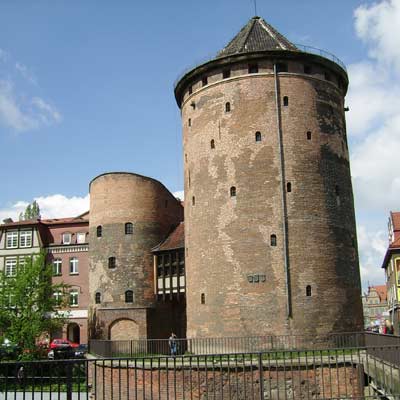
The Stągwie Mleczne was the ancient gateway to the southern side of Gdansk
For the real Milan experience, you want to visit during the summer or winter fashion weeks (Sep/Oct or Feb/Mar), to mingle with models, stylish and Aficionados.
For a city break, Milan is almost year-round, but it is cool and possibly wet in the winter, while in hot August most residents head to the beach for the whole month.
One of the quirks of Milan is at the weekends, most of its affluent or mobile residents leave the city for the coast (summer), the Alps (winter) or lakes (Spring/Autumn), leaving the city to tourists and foreign shoppers.
Gdansk is surely at its best in the warmer months. Between May and September is when most travellers come. They get to enjoy all the al fresco bars along the old port. They can wander the Old Town without worrying (too much, at least) about rain. They can hit the open-air terraces to taste pierogi dumplings. The weather is a little milder than inland Poland thanks to the tempering effect of the Baltic Sea. Average highs in July are in the low 20s, but that's enough to bring crowds to the beaches of Sopot and the north coast.
The winter in Gdansk can be brutal. The Baltic magnetises icy storms and cold winds across the shoreline and the city. It's a time to get cosy in cute cafes and sip warm beers (yes, that's a thing here), but be certain to pack the thermal leggings and snow coats.
Gdansk has got loads going for it on the travel front. Melding enthralling medieval history with sobering tales of wartime and the proud trade union movement, it's a gem for those looking to unravel the history of Central-Eastern Europe. Shoppers get to delve into Amber shops galore – the city is hailed as one of the best places in the world to buy the glowing fossil. Hedonists get everything from basement bars to wild clubs in old bunkers that stay open all night. Sightseers need only look to the historic Old Town and its grand churches and squares.
Adding to all that, Gdansk has beaches. A quick train to Sopot will reveal one of the nicest in the region, with a long pier that juts out into the Baltic. A little further and you can get to Puck, which sits at the base of what is arguably Poland's finest length of coastline.
If you have a passion for fashion, a flair for style, and are willing to indulge in a premium experience, Milan is your destination. The city stands out for its high-end designer shopping, trendsetting fashion, and its overall chic aesthetic.
However, some visitors may find Milan less captivating compared to the grandeur of Rome, the cultural richness of Florence, or the picturesque scenes of Venice. Milan is predominantly a business hub, where the hardworking ethos of its inhabitants is reflected in its cutting-edge fashion and refined nightlife.
Insight: There are few historic buildings in Milan, as many were destroyed by the extensive bombing of the second world war.

The distinctive Castello Sforzesco castle in Milan
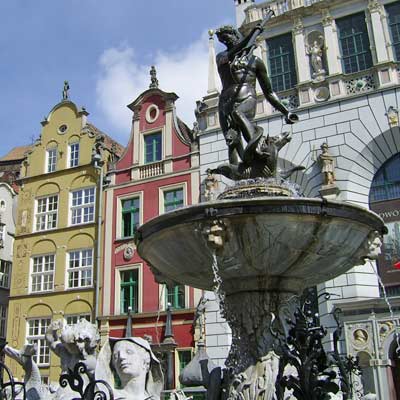
Neptune's Fountain in the historic centre of Gdansk
48 hours in Milan
The interactive map below shows a suggested tour for 48hours in Milan. The first day is shown in green and the second day is marked in yellow.
Day 1: Start your first day at Piazza del Duomo, the vibrant heart of Milan. This square is home to the stunning Gothic Duomo di Milano cathedral (be sure to visit the roof for spectacular views) and the elegant Galleria shopping complex, which houses a range of boutiques and high-end retailers. On the other side, you'll find the Palazzo Marino and the prestigious Teatro alla Scala.
In the afternoon, take time to explore the area around the Sforza Castle and Parco Sempione. Make sure to visit the Santa Maria delle Grazie convent, where you can admire the renowned “The Last Supper” fresco. Later, explore the fashionable Brera district, known for its blend of luxury stores and stylish residents.
Early evening is when Milan truly comes alive. As the workday ends, locals flock to bars for Apericena (a happy hour accompanied by a light buffet), where they enjoy fine cocktails and showcase the latest fashion trends. The Navigli district is an excellent spot to immerse yourself in this contemporary cultural tradition.

The Santa Maria delle Grazie convent, the location of one of the most controversial religious paints….
Day 2: For your second day, take a stroll from the Duomo, along the lively Via Torino, and continue onto Corso di Porta Ticinese, passing the impressive Basilica San Lorenzo Maggiore before entering the vibrant Navigli district. This canal-lined quarter brims with artisanal shops, trendy bars, and is a popular haunt for the city's youthful population.
The canals and train lines mark the boundary between Navigli and Zona Tortona, a district that has transformed from its gritty past to become Milan's hub of design and creativity. Today, designers breathe new life into former warehouses, creating the latest fashion trends. The area is subtly cool and epitomises the determination and fervour of Milan's residents.
For football enthusiasts, a tour of the iconic San Siro stadium is a must on your second day in the city.
Related articles: 48 hours in Milan

San Siro stadium, home to two of Italy’ greatest football teams
48hours in Gdansk
Gdansk has big-name sights like the iconic dockyards and its Old Town. But it also has secrets up its millennia-old sleeve. This 48-hour itinerary covers both, with a little bit of partying and beachside living thrown in for good measure…
The interactive map below shows a suggested route for the 48 hours in Gdansk, with day 1 highlighted in green and day two in yellow.
Day 1: Make for Cafe Libertas for breakfast. It's a popular spot with fruit bowls and artisan coffee that will fuel you up right in the heart of the Old Town. Stepping outside the door, you'll find quaint Chlebnicka street, which you can stroll between grand townhouses with Flemish-inspired façades.
At one end is Chlebnicka Gate, still flaunting its original medieval crest from 1450. Beyond is the riverside and the iconic Żuraw Crane. Now a branch of the National Maritime Museum, it's a great detour to make if you want to learn all about the history of shipbuilding in Gdansk.
Delve back into the maze of streets to the west and try to find the St. Mary's Church. It shouldn't be difficult – it's among the three largest brick-built churches on the planet! Past that is bustling Długa. The main drag of the city, it's awash with amber shops, bars, eateries and more.
Stop to sample some pierogi dumplings or grab a beer, and then move on to lovely Long Market square. That's where the famous statue of Neptune beckons, hemmed in by pastel-painted guilds. As evening arrives, return to Długa or Piwna street for basement bars that gush with vodka and cheap beer.
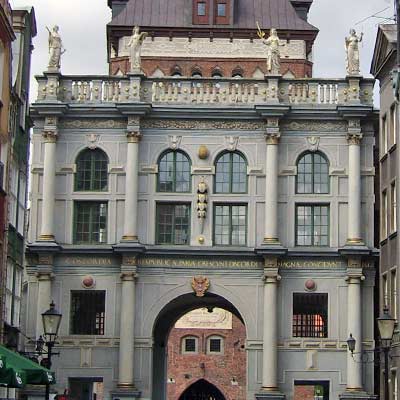
The Złota Brama (Golden Gate) is lined with figures depicting the qualities of the ideal citizen
Day 2: Morning of Day 2 takes you out to the legendary Gdansk Shipyards. If you haven't heard of these already, then buckle in for a history lesson in the fall of Communism. It was here, in 1980, that the powerful Solidarity movement first took route under the leadership of Lech Wałęsa. It would go on to fuel revolutions across the Eastern Bloc, which finished with the fall of the Berlin Wall and the end of Russian dominion in Europe.
There's nowhere better to uncover all that than at the European Solidarity Centre. A visit is likely to take a few hours, especially if you want to drop by the striking Monument to the Fallen Shipyard Workers of 1970 next door. For the afternoon, it's time to explore the Tri-City.
That means hopping on the SKM railway line from Gdańsk Główny. The ride to Sopot is only 15 minutes. It takes you to a lively resort area that's positively brimming with bars and eateries. It's also on the beach, so you might want to spend the evening here, moving between the music venues to famous Sopot Pier.

The European Solidarity Centre commemorates the Polish civil resistance and trade union which began in the Polish shipyards and ultimately led to the collapse of the communism in the USSR

Sopot has a beautiful beach and is an enjoyable destination during the summer season
Getting to Gdansk by plane is easy because of the countless short-haul and low-cost carriers that now fly into the local Lech Wałęsa Airport. A mere nine miles outside of the centre, you can get to the terminals on the 210 bus from the main train station. There are often problems with scam taxi fares to and from the airport, so always agree a rough price beforehand (the normal rate is between 60-80 PLN).
Gdansk's Main City is a joy to walk. The streets of Długa and the quays are all connected by loads of hidden alleys and paths. It might pay to have a tourist map at hand because getting lost is almost inevitable if it's your first time in town.
To travel to the beaches, the shipyards, and Sopot, you'll need to make use of the trams and inter-city SKM trains. The former cost 3.2 PLN per ride. Tickets are available from vending machines at most stations. Be sure to validate as you board.
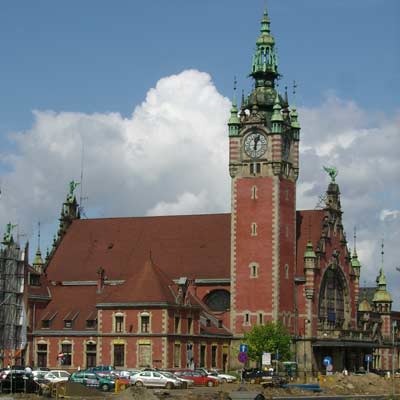
Gdansk Glowny - the main train station of Gdansk
The best location for a hotel in Gdansk is certainly in the Old Town area. There, you'll get boutique lodgings and stylish aparthotels set in centuries-old buildings. An alternative for those who favour beaches and nightlife would be to bed down in Sopot, where resort hotels with swimming pools and stylish restaurants are the norm.
Gdansk is among the most liberal and welcoming of Polish cities. It's got a vibrant LGBT scene and incidents of racism and crime are relatively rare. Still, there are still tensions in Poland and it's wise to be on your guard, especially if out at night in the bars of the Old Town.
There are three airports for Milan; Linate (small dated, 7km to centre), Malpensa (main international airport, 50km from west of Milan) and Bergamo (Ryan air hub, 50km from north east of Milan). There is a bus from Bergamo to Milan (60minutes €6.00), train from Malpensa airport (50minutes €13.00) and from Linate just take a taxi (€12-15). There is no shortage of flights and departures to or from Milan, and fares, if booked far enough in advance, can be very cheap.
Milan has ample hotels and accommodation options, but these obviously need to be booked far in advance during the two fashion weeks. For your first visit you would want to be based close to the historic centre (Centro Storico) or for a more lively and authentic experience the Navigli district. For cheaper accommodation look to the Citta Studi, the main student area of the city. Milan has very good public transport, and is easy to travel around the city.

The Arco della Pace, in Milan

oh we were stuck in the airport!

Copenhagen was a bit expensive...

All we did was drink beer in Brussels...

Muncih was crazy

And we got so burnt!

Remeber that night in Rome

oh we were stuck in the airport

So much fun kayaking

Berlin and that group from Austria!

There was such a view from that church

And we got so burnt!

Munich was eventful, wasn't it!

Such a view from that cathedral in Florence

Lisbon was such so much fun

Last summer was so much fun .... x

Remeber that night in Rome

Lisbon was such so much fun

Such a view from that cathedral in Florence

Munich was eventful, wasn't it!

And we got so burnt!

Remeber that night in Rome

All we did was drink beer in Brussels...

Berlin and that group from Austria!

Can't wait to go back to Dubrovnik

Remember that boat ride in Prague

Copenhagen was a bit expensive...
